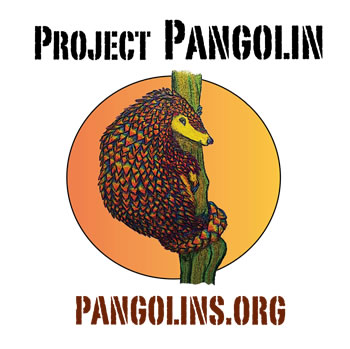The Story of Annamiticus
Annamiticus is named in memory of the extinct Rhinoceros sondaicus annamiticus. The Javan rhino tragedy made us more determined than ever to root out, expose, and stop the greed and corruption that is decimating our Planet’s precious wildlife.
It all started as a side project in 2007 when Rhishja learned about the Javan rhino crisis.
She created savingrhinos.org (website retired in 2016), an educational website. In 2008, Rhishja launched the small business Saving Rhinos LLC (closed in 2012) to sell rhino-themed merchandise (such as t-shirts) online. By 2009, Saving Rhinos had become a full-time volunteer endeavor and helped support public awareness projects in Nepal through Partnership for Rhino Conservation (PARC/Nepal) with t-shirt sales, until 2012.
During those five years, Rhishja combined her passion with her previous experience in marketing and design to grow Saving Rhinos into one of the most comprehensive online resources about the illegal rhino horn trade, writing more than 600 articles.
In 2011, Rhishja published her first book, Murder, Myths & Medicine. That same year, she launched the Project Pangolin blog (merged with the World Pangolin Day website in 2015), which contains dozens of curated news stories about pangolin seizures and arrests, along with research and information about pangolins and the pangolin trade.
In 2012, Rhishja founded Annamiticus to fight against illegal wildlife trade by pushing for enforcement of wildlife crime laws, educating the public about the wildlife trafficking crisis, and scrutinizing the issues.That same year, she founded World Pangolin Day and launched the Behind the Schemes podcast.
Rhishja maintained the World Pangolin Day (third Saturday in February) website and Facebook page from 2012 – 2022, and the World Rhino Day (September 22) website and Facebook page from 2011 – 2022.
Annamiticus is organized and operated for educational purposes within the meaning of the Internal Revenue Service Code section 501(c)(3).
Our humble beginnings: Saving Rhinos and Project Pangolin:
Saving Rhinos

From 2007 — 2012, the ongoing work of Saving Rhinos made a difference in raising public awareness and bringing media attention to the rhino crisis.
2007: First version of Saving Rhinos website launched and CafePress shop opened.
2008: The Saving Rhinos blog called “Rhino Horn is Not Medicine” started with a short post in December 2008 and by August 2012, it contained over 600 articles. Ours was the first blog to focus on the illegal rhino horn trade.
2009: The Saving Rhinos Facebook page was created as an additional platform for the public and the media to access the information and news from our blog. Our Twitter profile was also created in 2009, for the same purposes. We began working with Suman Bhattarai and his grassroots organization Partnership for Rhino Conservation (PARC/Nepal) in June 2009. Under Suman’s guidance, PARC focused on helping the residents of Chitwan National Park’s buffer zone live side-by-side with the greater one-horned rhino. Suman has since taken a post as Assistant Professor at Nepal’s Institute of Forestry at Tribhuvan University.
2010: Through her tenacious research, Rhishja was one of the first to confirm that China was working to circumvent the international trade ban on rhino horn by exploiting a CITES loophole. She began writing the article series in July 2010 with Revealed: Location of China’s Rhino Farm and ‘Horn Harvesting’ Experiments.
2011: In February 2011, Rhishja’s book Murder, Myths & Medicine was published by Saving Rhinos. This was the world’s first book to highlight the events of 2010’s rhino crisis. Rhishja was also interviewed by Mongabay.com, and her interview was the fourth most popular Mongabay news article for May 2011. World Rhino Day was an enormous success in 2011, thanks to the collaborative efforts of Saving Rhinos, Chishakwe Ranch in Zimbabwe and many others around the world.
2012: Saving Rhinos’ research is referenced in the report “Assessment of Rhino Horn as a Traditional Medicine” prepared for the CITES Secretariat (April 2012), and in the WWF “Wildlife Crime Scorecard” (July 2012), produced to coincide with the CITES Standing Committee meeting.
Project Pangolin / World Pangolin Day

In October 2011, Rhishja launched the Project Pangolin blog (merged with the World Pangolin Day website in 2015). In 2022, Rhishja passed the World Pangolin Day torch to the team at Save Pangolins.
Did you know pangolins are one of the most heavily trafficked animals in Southeast Asia and China?
These defenseless mammals are being slaughtered to extinction – simply to meet a demand based on superstitions and exploited by greed.
Experts warn that the illegal trade in pangolins will render them extinct within our lifetime – yet most people have never heard of a pangolin!
The Project Pangolin blog contains dozens of curated news stories about pangolin seizures and arrests, along with research and information about pangolins and the pangolin trade.
- 01 November 2011: Recent Report on Illegal Pangolin Trade Reveals Alarming Activity in Vietnam
- 16 November 2011: Chinese Demand for Pangolins Spreads to Africa
- 16 January 2012: ‘Medicinal Use’ Pangolin Farms in China?
- 18 January 2012: World Pangolin Day is February 18!
- 24 January 2012: Rhishja is quoted in the Mongabay article “Pangolins imperiled by internet trade — are companies responding quickly enough?“
- 01 May 2012: The Cruel Methods Used to ‘Fatten’ Pangolins for the Illegal Market
